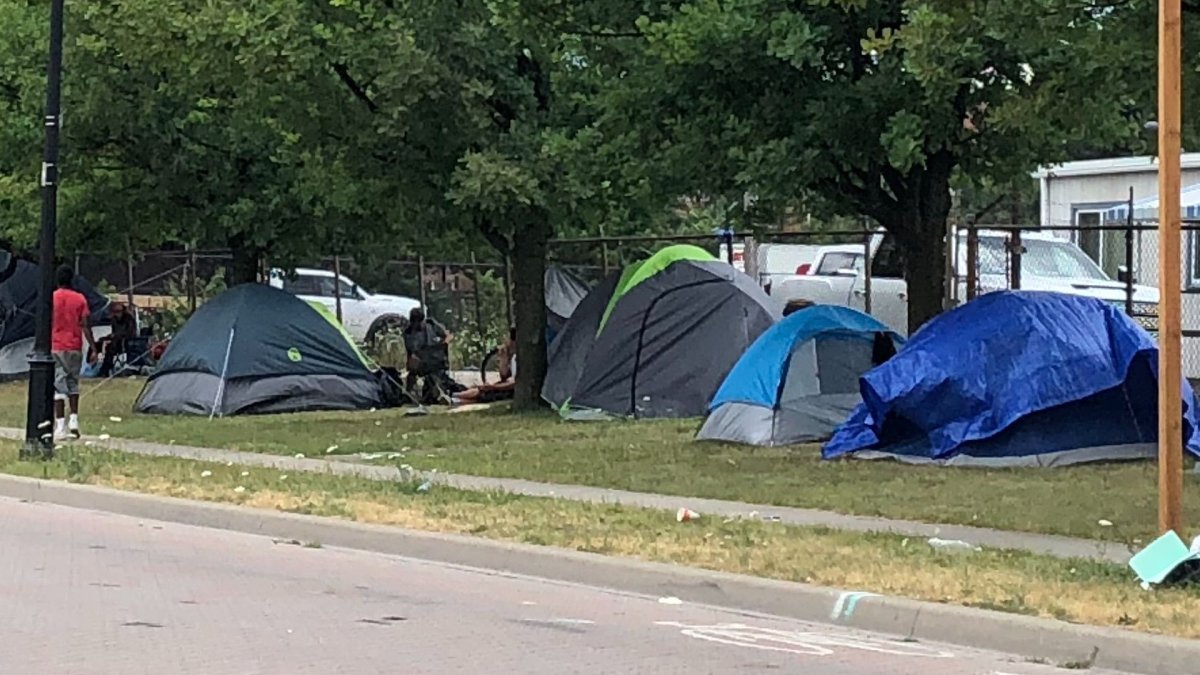Hamilton’s path to ending chronic homelessness begins with providing more funding for prevention, accommodations and support to those who need help and with less reliance on emergency response, according to a long-awaited staff report.

City councillors learned Thursday it would take initial annual funding of around $40 million and potentially future yearly financing in the range of $30 million going forward to avoid the gaps that exist now in affordable housing.
“Secure housing provides a sense of safety and stability for people coming out of homelessness,” housing director Michelle Baird said.
“That means they are no longer in survival mode and are instead able to focus on their own health, well-being and employment.”
Baird said existing barriers include limited funding from upper levels of government, a lack of resources for vulnerable residents with complex needs and staff burnout within the social services sector.
The total number of people who have connected with the city’s homeless-serving system as of January is around 1,500, up from the same time in 2020 when the number was around 1,000, according to the Health and Safe Communities report.
Although Baird admitted some of the increases seen over the last three years are likely due to better data collection.
About 500 of the 1,500 currently experiencing homelessness have been in that position for over six months while about 1,000 were experiencing homelessness for less than six months.
Over 4,000 people accessed the system for all of 2022 with close to 3,100 individuals spending at least one night in a Hamilton emergency shelter.
Close to 60 per cent of them stayed for more than 30 days.
The average length of stay in a shelter increased to 88 days in 2022 from 80 days in 2021.
Baird suggested homelessness wasn’t a result of income deficits alone, but a “complex social challenge” with many drivers municipalities can’t eliminate on their own.
“It’s within the systems sphere that municipalities have the greatest influence in ending homelessness,” Baird explained.
“We know that we cannot end all experiences of homelessness forever, what we are looking to do … is to build a support system that ensures homelessness is prevented whenever possible.”
Approved enhancements to city programs targeting homelessness will reach an additional 1,900 people at the prevention stage via a $22 million investment.
The report says new funding of $19 million will be needed to create some 1,400 stable homes for people exiting homelessness and another 600 supported per year for those in the prevention stage.
Mike Zegarac, general manager of finance and corporate services, told councillors there will be challenges in financing these programs since funding sources have not yet been identified.
In the coming weeks, Zegarac is expected to present a 2022 financial report which will show housing services had approximately $21 million in expenses for 2022, with much of that covered via one-time COVID-19 funding and city reserves.
Local taxpayers will have to fund $14 million of that after deducting some $7 million in provincial funding as it relates to COVID-19, according to Zegarac.
“We will have to absorb that corporately and will have to take funds from across departments to offset that $14-million pressure,” he explained.
“I’m throwing a lot in numbers at committee, but just wanting to just remind … that we will have to turn to reserves.
He went on to suggest the city will need help from other levels of government for the levels of funding needed to facilitate an initiative to end homelessness.
“My final comment is I don’t see a path forward for the city alone to fund this level of investment,” Zegaric said.
“I appreciate all the effort that’s identified in terms of road mapping going forward, the $19 million, but I’m going to suggest there’s going to be far more costs.”
A number of councillors characterized the city’s current predicament as one caused by past defunding of social and health programs over generations at all levels of government.
Ward 13 Coun. Alex Wilson suggested decades of decision-making “has stolen from the future because now the bills are due.”
“We’ve taken money from the future, and that’s what this bill represents,” Wilson said.
“That’s what these numbers represent: money that wasn’t put in earlier, money that has been siphoned out into someone else’s pocket earlier that now is coming due.”
Upper Stoney Creek Ward 9 Coun. Brad Clark agreed with Zegaric’s insinuation that the report’s suggestion that $40 million is required for housing across the city simply can’t be borne by property taxpayers alone.
“I’m befuddled that we could find ourselves in a situation where we’re talking about $40 million being put on the property taxpayer at a time when we’re already close to seven per cent on our levy increase,” Clark said.









Comments